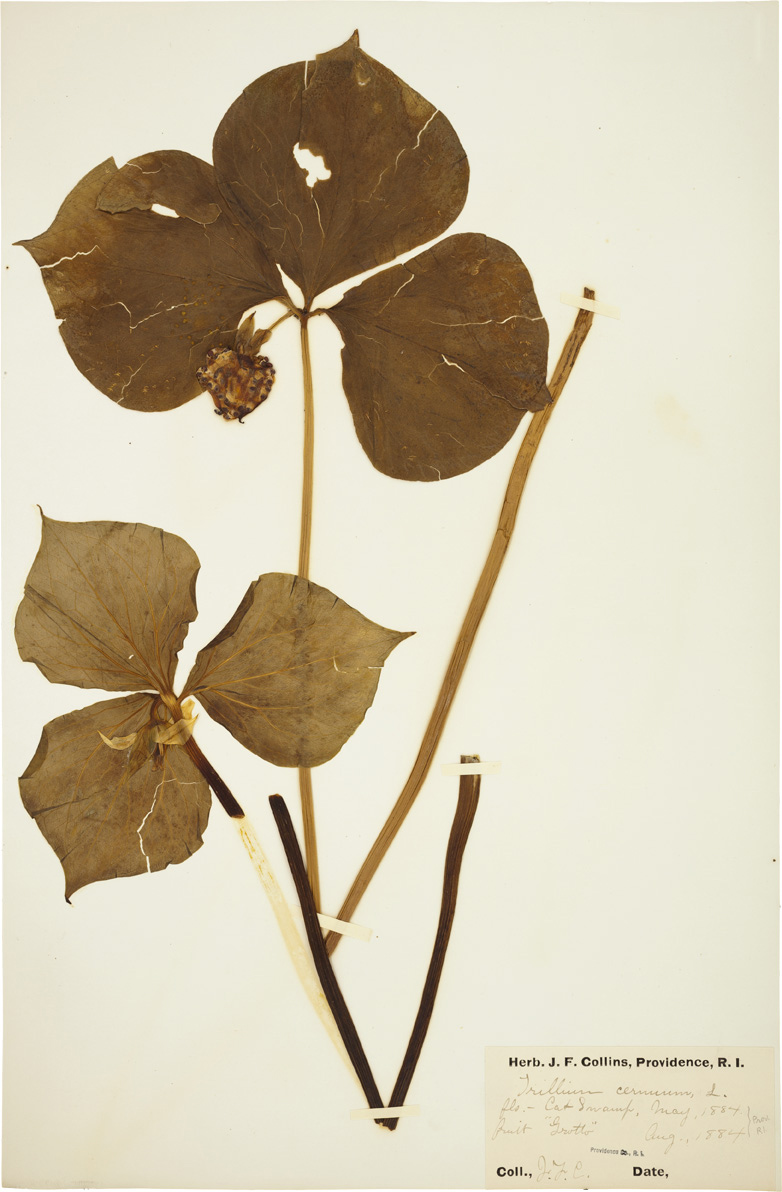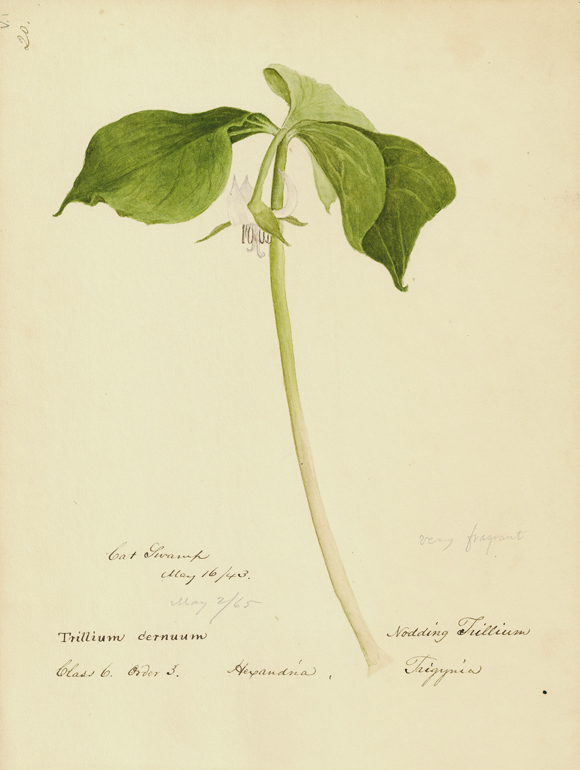The Trillium nods to the sermon asleep;
Perhaps he has drunk from the painted cup, deep
— William Whitman Bailey, “Three Pulpits,” from Poems (1909)
Plants are the basis of all natural communities, providing the framework for an interacting web of animals and microbes. Based on the specimens in the Brown University Herbarium, Cat Swamp was likely a seasonally flooded, shallow water marsh community. We know it contained common indicator plant species for this type of habitat both in the wetland itself and around the shrubby margin. The marsh would also have been home to many bird, mammal, reptile, amphibian and insect species. Cat Swamp was a haven of biodiversity and important natural habitat in the increasingly urban Providence of the 19th and early 20th centuries.
Even though Cat Swamp has gone, emergent marshes are still found across Rhode Island and their unique value to wildlife has afforded them some regulatory protection. They are reservoirs of biodiversity and provide important functions such as pollution filtration and flood control. Despite their importance to wildlife and people, marshes are under threat from introduced species, runoff and climate change. By exploring marshes and wetlands around Rhode Island, it is possible to imagine the lost Cat Swamp habitat.
Trillium cernuum L.
nodding trillium, Melanthiaceae (bunchflower family)
Nodding trillium is found throughout New England and the upper Midwest. Given its preference for moist woods, it was likely growing in the forested margins around Cat Swamp. The white flowers hang down, giving the plant its common name. Trilliums are myrmecochorous, meaning that ants disperse their seeds.
The genus name, Trillium, comes from the Latin tri, referring to the leaves and flowers occurring in threes. The species name, cernuum, comes from the Latin for “drooping.”
Below: 1835 Lockwood Map | Rhode Island Historical Society



